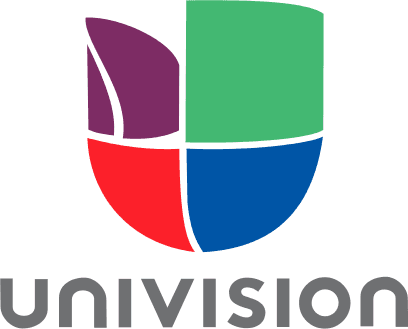Does Neurofeedback Therapy Work For Insomnia?
Neurofeedback therapy is a non-invasive and non-pharmaceutical treatment that’s been shown to be an effective treatment for not only insomnia but also for numerous stress disorders (PTSD, anxiety, depression, substance abuse), ADHD, autism spectrum disorders, and more.
How does neurofeedback therapy for insomnia work?
In short, neurofeedback training teaches patients how to utilize one’s mind-body connection to reach a deep state of relaxation. With practice, patients can use this ability to not only help them fall asleep faster but also improve their quality of sleep and quality of life as well.
For over forty years, the Drake Institute of Neurophysical Medicine has effectively used neurofeedback to help thousands of patients to improve or overcome their disorders.
To learn more about our non-drug treatment protocols for insomnia, please fill out our contact form or give us a call at 800-700-4233.
What Is Neurofeedback?
Neurofeedback is a type of biofeedback, sometimes referred to as EEG biofeedback. . While biofeedback measures and records certain physical functions (e.g., hand temperature, muscle tension, heart rate variability, etc.), neurofeedback measures and records brainwave activity..
For treatment, sensors are placed on the scalp that records the brain’s activity measured in brainwaves.
We then use these findings to create a custom-designed neurofeedback treatment protocol to address the patient’s unique needs and symptoms.
Throughout treatment, patients will learn how to produce desired neurophysiological changes to improve control of their health and mental functioning.
How Does Neurofeedback Work?
Neurofeedback works for insomnia by giving patients accurate, instantaneous feedback on their current brain functioning.
This is done through brainwave measurements with instantaneous feedback provided to the patient. To understand how neurofeedback works to balance these brainwaves, we must first understand which brainwaves are responsible for which functions.
The high-frequency or fast waves are beta waves. They occur during moments of concentration and task engagement. For instance, beta waves are most likely present when students focus on academic work or an adult is performing job duties
The next frequency waves are alpha waves. These waves are dominant when we close our eyes and relax or meditate.
The slower waves consist of delta and theta. Theta waves are slower than alpha waves and occur when awake but not focusing on anything in particular. Theta waves are also associated with daydreaming. They increase as we are falling asleep. The slowest waves are delta waves. They occur predominantly when we are in deep sleep.
All of these brainwaves are necessary for proper brain function, but getting too many or not enough of them could affect cognitive functioning. For example, too many slow-frequency waves can make us feel lethargic, fatigued, and have difficulty sustaining concentration on tasks which would diminish one’s performance.
As such, the goal of neurofeedback training is to not only help patients achieve a more optimal balance of brainwaves to improve concentration, memory, and focus, but to also help patients be able to relax at the end of the day so they can experience a restful night’s sleep.
What Is Insomnia?
Insomnia is the inability to fall or stay asleep at night. Interestingly, insomnia isn’t identified so much by the number of hours of sleep but rather by the quality of sleep. That means that, even if a patient is sleeping 8 hours a night, they still may be suffering from insomnia if they aren’t getting good sleep.
Insomnia is a common and distressing issue in the U.S. In fact, it is estimated that nearly 25% of Americans experience some amount of insomnia every year. When left untreated, insomnia can lead to persistent drowsiness, problems with concentration and focus, and memory loss. [i]
Symptoms Of Insomnia
The human brain needs to rest just as much as the body does. Insomnia is essentially the inability of the brain to rest properly and restore itself.. When that happens, multiple symptoms can occur as a result.
These symptoms can be physical or psychological and may include any of the following:
- Feeling exhausted in the morning despite a full night’s sleep
- Daytime drowsiness
- Depression
- Anxiety
- Irritability
- Difficulty concentrating or paying attention
- Impaired executive function, including memory, cognition, and self-control
- Increased frequency of mistakes
What Causes Insomnia?
There is no single cause that can be attributed to all cases of insomnia. Instead, insomnia is usually a symptom of a more significant ailment, either psychological or physical. These conditions might include:
- Stress
- Sinus allergies
- Sleep apnea
- Acid reflux
- Arthritis
- Neurological conditions
- Chronic pain
- Back pain
- Depression
- Anxiety
- Feeling overwhelmed
- A general feeling of being “revved up” or overstimulated
- Restless leg syndrome
- Menopause
- Medications and drugs
Why Insomnia Is A Serious Condition
It can be easy to discount how important sleep is, but insomnia is indeed a serious condition that can have devastating effects on a person. The constant fatigue related to the inability to sleep well can lead to impaired thinking, slower reflexes, and poor memory recall.
Keep reading for some of the most severe effects associated with poor sleep.
- Impaired immune system
- Heart disease
- Heart attack
- Irregular heartbeat/heart palpitations
- High blood pressure
- Stroke
- Diabetes
- Increased risk of Alzheimer’s
- Increased risk of motor vehicle accidents
Important to note is that even if a person doesn’t experience these severe side effects, insomnia almost always leads to a poorer quality of life.
Treating Insomnia At The Drake Institute
Because there is no single cause for insomnia, it can be historically difficult to treat.
So does neurofeedback work for insomnia? Absolutely! Neurofeedback therapy for insomnia can be incredibly effective, especially when combined with qEEG brain mapping and Neuromodulation.
For over forty years, the Drake Institute has been effectively treating patients with non-invasive and non-drug treatments like neurofeedback therapy for insomnia.
With the help of neurofeedback training, patients can learn how to self-regulate and generate more “optimal” brainwave functioning without the help of any external stimuli, prescription medications, or further treatments.
And because results are self-generated, patients can experience symptom relief long after treatment has ended.
For more information regarding our advanced treatment technologies, please continue reading below:
Brain Mapping
Brain mapping is the first step in all of our non-drug treatment protocols.
How does it work?
To begin, 19 sensors are placed on the patient’s scalp that record the brain’s activity. Please note that during brain mapping, the brain is not stimulated in any way and drugs are not administered. Furthermore, brain mapping is completely non-invasive and painless.
Once the patient’s brainwave activity has been recorded and mapped, the results are then compared to a reference normative database of “normal” activity found in same-age individuals, which allows us to identify the regions of the brain that may be experiencing abnormal activity.
Neurofeedback
Once brain mapping is complete, neurofeedback therapy sessions may begin. During treatment, patients are shown a visual representation of their brainwave activity on a computer screen in front of them.
In one example, the patient’s brainwave activity is shown as an animation of a car driving down a highway. When the patient “shifts” their brain into a healthier state of brain functioning, the car stays in the right lane and an auditory tone is triggered every half second. In sum, the patient is receiving visual and auditory feedback when their brain activity shifts to more normalized functioning patterns.
With practice, these acts of repeated, healthier self-regulation can become “wired” into the patient’s nervous system, which in turn, can help them improve or overcome the symptoms of a variety of disorders, including insomnia.
Neuromodulation
In addition to qEEG brain mapping and neurofeedback, neuromodulation can also help patients with insomnia.
At the Drake Institute, we use NeuroField technology for neurostimulation that utilizes a very low-intensity pulse electromagnetic field generator (pEMF), transcranial Direct Current Stimulation (tDCS), and transcranial Alternating Current Stimulation (tACS).
This technology allows us to stimulate a brainwave pattern that the patient’s brain is deficient in. Once the brainwave is generated, the patient’s brain will naturally want to mimic this healthier functioning pattern and start to generate this brainwave pattern on its own. This process can also increase blood flow and reduce inflammation.
With the help of neuromodulation, patients can experience even faster results from neurofeedback training, as the results generated from neurofeedback can be reinforced with neuromodulation.
How Does Neurofeedback Therapy Compare To Drug-Based Treatments?
Neurofeedback therapy for insomnia is non-drug and non-invasive. Indeed, treatment is more akin to sessions at the gym with a personal trainer: The trainer takes an initial assessment of your current state and develops a training protocol to address your specific needs. Then, they will help you learn and practice techniques that you can eventually do on your own.
Neurofeedback therapy can produce long-term symptom relief, long after treatment has ended. Additionally, neurofeedback doesn’t produce unpleasant side effects that may be associated with medications, which can include:
- Constipation
- Diarrhea
- Dizziness
- Daytime drowsiness
- Dry mouth
- Headaches
- Changes in appetite
- Impaired cognitive ability
- Shortened attention span
- Short-term memory problems
Is Neurofeedback Safe?
Neurofeedback therapy for insomnia is an incredibly safe treatment protocol. Treatment is non-invasive and non-pharmaceutical, and instead, focuses on the self-regulation of more balanced brainwave frequencies to achieve symptom relief.
As such, neurofeedback is a safe and effective treatment for insomnia and many other conditions.
Contact The Drake Institute Today!
The importance of sleep cannot be overstated, especially when it comes to living a fulfilling life.
At the Drake Institute, our goal is to help our patients live the highest quality of life possible. If you or someone you know is suffering from insomnia or other sleep conditions, give us a call today at 800-700-4233 or fill out the free consultation form below.
[i] https://www.sciencedaily.com/releases/2018/06/180605154114.htm




